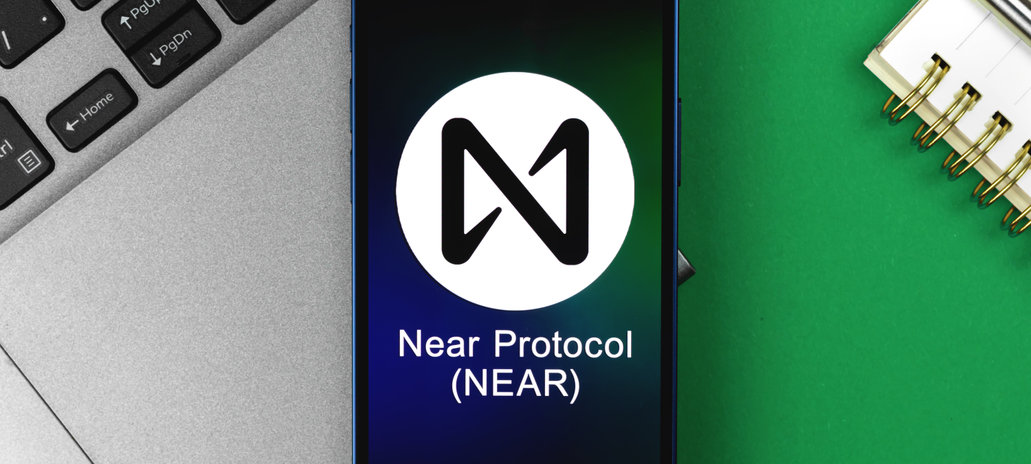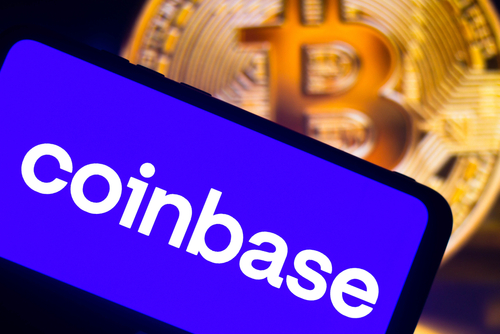
Der Kryptowährungsmarkt hat am zweiten Tag in Folge weiter geblutet. Bitcoin ist kontinuierlich gesunken und hat ein Sechsmonatstief erreicht. Er wird derzeit bei rund 35.500 USD gehandelt, ein Rückgang von 6,28 % über den Tag. Ether und andere Altcoins haben ebenfalls geblutet und einen Teil der Gewinne aus den jüngsten Rallyes zunichte gemacht. Der Absturz wurde dem weltweiten Aktienverkauf und einem drohenden Krypto-Verbot in Russland zugeschrieben.
Hier sind weitere Top-Kryptowährungs-Schlagzeilen, die Sie diese Woche vielleicht verpasst haben:
Singapurs oberste Finanzaufsichtsbehörde verfolgt die Betreiber von Kryptowährungs-Geldautomaten
Betreiber von Kryptowährungs-Geldautomaten in Singapur wurden am Montag angewiesen, ihren Betrieb in Übereinstimmung mit kürzlich veröffentlichten Richtlinien einzustellen.
Die ausgestellte „Anfrage“ verbietet Kryptogeschäften das Ausleihen von Diensten an physischen Krypto-Geldautomaten. Singapur hat fünf Kryptomaschinen, die über seine Einkaufszentren verteilt sind, von denen zwei am Dienstag nach der Anordnung gemäß einem Bloomberg-Bericht als inaktiv bestätigt wurden.
Dies stellt die jüngsten Bemühungen der Monetary Authority of Singapore dar, den Kryptowährungssektor zu regulieren. Die MAS argumentierte, dass die Bereitstellung von Kontakten zu digitalen Vermögenswerten für Einheimische über Geldautomaten impulsiven Kryptohandel fördert und Handelsentscheidungen ohne Berücksichtigung der damit verbundenen Risiken veranlasst.
Twitter macht großen Sprung und bringt überprüfbare NFT-Profilbilder in Ihre Chronik
Jack Dorseys reine Bitcoin-Philosophie wurde nach der Einführung des Features anscheinend auf den Kopf gestellt. Am Donnerstag gab Twitter bekannt, dass es eine NFT-Profilbild-Überprüfungsfunktion für Twitter Blue-Benutzer anstrebt.
In einem Schritt, der dazu führte, dass der Technologieriese zu einer der ersten Social-Media-Plattformen wurde, die NFTs in ihre App einbaute, werden Twitter Blue-Abonnenten auf iOS-Geräten von nun an die Möglichkeit haben, ihre Krypto-Wallets mit ihren Twitter-Profilen zu verbinden und somit ihre NFTs anzuzeigen.
Während mehrere Benutzer bereits NFTs in ihren Profilen verwenden, wird Twitter jetzt eine Verifizierbarkeit hinzufügen, um die Authentifizierung und den wahren Besitz der digitalen Kunst anzuzeigen. Darüber hinaus würden die Profilbilder eine unterschiedliche Form haben und eine schicke sechseckige Struktur annehmen, die sich von den üblichen kreisförmigen Profilbildern der Plattform unterscheidet.
Twitter hat jedoch nicht klargestellt, wie es mit Rechtsklickern umgehen will, die die NFT-Profilbilder herunterladen, zu digitalen Sammlerstücken prägen und als eigene NFT-Profilbilder verwenden könnten.
Das soziale Netzwerk gab auch an, dass sich die neue NFT-Funktion noch in der aktiven Entwicklung befindet und es unklar bleibt, ob sie der allgemeinen Community auf der Plattform zur Verfügung gestellt werden soll.
Genau wie bei DeFi verliert Ethereum bei NFTs gegen konkurrierende Ökosysteme, warnt JPMorgan
In einer kürzlich an Kunden gesendeten Mitteilung postulierte JPMorgan, dass Ethereum kontinuierlich seinen Marktanteil an kleinere Netzwerke wie Solana verliert. Solana hat seit August 2021 Ethereum beim NFT-Volumenanteil durchweg übertroffen, das ist die Zeit, als die NFT-Szene begann, einen großen Aufschwung zu sehen.
Ein Team von Analysten der Investmentbank erklärte, dass Ethereum von Überlastungsproblemen und hohen Gasgebühren geplagt wurde, ungeeignete Faktoren für Benutzer, die NFTs prägen möchten. Konkurrierende Ökosysteme wie Solana, Wax und Tezos ziehen die migrierenden Benutzer in ihre Kreise.
Nikolaos Panigirtzoglou, der das Forschungsteam leitete, erklärte, dass die Marktdominanz von Ethereum in diesem Bereich innerhalb eines Jahres um 15 % gesunken ist. Anfang 2021 lag die Dominanz des Ökosystems bei 90 %, jetzt bei 80 %.
Panigirtzoglou erklärte auch, dass, wenn dieser Trend im Laufe des Jahres „nachhaltiger“ erscheinen würde, wir einen größeren Einfluss auf die Bewertung von Ethereum sehen könnten, der sich aus dieser Marktverschiebung ergibt.
Dies könnte Anlass zur Sorge geben, da JPMorgan die Theorie aufstellte, dass der Marktanteil von Ethereum bei NFTs weitaus wertvoller sei als bei DeFi. Der Grund dafür ist, dass NFTs das „am schnellsten wachsende Universum im Krypto-Ökosystem“ sind.
MicroStrategy wird seinen 5-Milliarden-Dollar-Bitcoin-Vorrat „hodln“, sagt der CEO
Michael Saylor, Chief Executive von MicroStrategy, sagte, dass seine Firma keine Bitcoin in ihrem Portfolio verkaufen, sondern ausschließlich kaufen und halten werde.
Saylors Kommentare erfolgten zu einer Zeit, in der die Stimmung auf den Kryptomärkten rückläufig ist und digitale Vermögenswerte kaum nach oben schauen. Der Geschäftsführer behauptete, dass er selbst dann nicht in Panik geriet, als der BTC-Markt um bis zu 40 % auf weniger als die 40.000-Dollar-Unterstützung fiel.
Saylor behauptete auch, dass er angesichts der steigenden Inflationsraten, die Fiat-Geld zeigt, „großen Trost“ in Bitcoin verspüre. Er argumentierte, dass seine Firma durch das Hodeln von Bitcoin eine ziemlich gute Stellung gegen ein inflationäres Umfeld aufgebaut habe.
Er sagte bereits Ende letzten Jahres voraus, dass er erwartet, dass Bitcoin in Zukunft 600.000 USD und schließlich 6 Millionen USD erreichen wird. Sein fester Glaube an Bitcoin zahlt sich derzeit jedoch nicht aus, da die Aktien von MicroStrategy im letzten Jahr um 16 % gefallen sind, obwohl Bitcoin im gleichen Zeitraum um 35 % gestiegen ist.
Intel plant, effizientere ASIC-Miner herauszubringen, schnappt sich das in Ohio ansässige Startup als ersten Großkunden
Der in Kalifornien ansässige Chiphersteller Intel plant Berichten zufolge die Veröffentlichung eines ultra-niedrigen und energieeffizienten ASIC-Miners auf der ISSCC-Konferenz, die für Ende nächsten Monats geplant ist.
Tom’s Hardware, das die Geschichte zuerst veröffentlichte, schlug vor, dass das bevorstehende Projekt ein Bitcoin-spezifischer ASIC sein würde, um sich an dem Patent für einen optimierten SHA-256-Datenpfad auszurichten, das Intel 2018IC beantragte. Es wäre auch wichtig, da Bitcoin den kryptografischen Hash-Algorithmus hashcash SHA-256 nutzt.
In einem Interview gegen Ende des letzten Jahres deutete Intels System- und Grafikarchitekt Raja Koduri an, dass das Unternehmen an dem Projekt interessiert sei. Er sagte, dass der Technologiehersteller an Hardware arbeite, die optimiert sei, um die Einschränkungen durch hohe Kosten und hohen Stromverbrauch bei der Blockchain-Validierung zu lösen.
Der von Intel geplante Mining-Chip „Bonanza Mine“ tauchte auch in einem späteren Bericht auf, diesmal von Fox Business.
In der Meldung wurde berichtet, dass GRIID, ein in Ohio ansässiges Mining-Startup-Unternehmen, eine Vereinbarung mit dem Chip-Hersteller getroffen hat, um der erste Empfänger von BZM2 ASIC-Minern zu werden. Laut einer S-4-Einreichung von GRIID beginnt die Lieferung der Bitcoin-Mining-Ausrüstung noch in diesem Jahr. Außerdem würde das Startup einen „signifikanten Anteil“ an Intels zukünftigem Pool von Minern haben.
The post MicroStrategy hält trotz Markteinbruch an Bitcoin-Vorräten fest appeared first on BitcoinMag.de.




